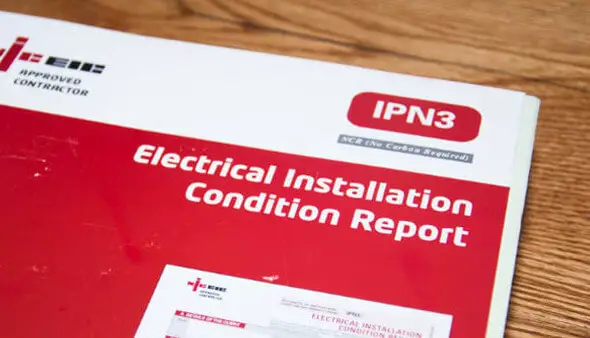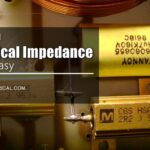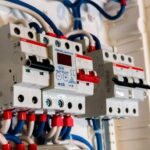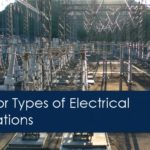An Electrical Installation Condition Report (EICR) is a vital assessment that examines the safety and condition of electrical installations in a property. This report ensures that electrical systems comply with current regulations and are safe for continued use. Executed by a competent professional, the EICR process involves a combination of inspection and testing to determine the adequacy of the electrical installation.
EICRs are crucial for maintaining the safety of tenants and properties, as they help identify potential hazards and issues that may arise from outdated or faulty electrical installations. By providing a comprehensive evaluation, the findings detailed in the EICR can be used to take necessary remedial actions and ensure compliance with safety standards.
Frequently performed in residential and commercial properties, EICRs are useful not only for legal compliance but also for owners or landlords to gain valuable insights into the condition of their electrical systems. By being aware of potential risks and addressing them promptly, property owners can minimise the likelihood of accidents and electrical failures, ultimately protecting the well-being of inhabitants and preserving the integrity of the property.
What Is an EICR
An EICR, or Electrical Installation Condition Report, is a comprehensive assessment of the condition of electrical installations within a property. It is designed to provide valuable information on the safety and compliance of the installation, ensuring that it meets current regulations.
The EICR process involves a combination of inspection and testing carried out by a qualified electrician. This includes examining the wiring, circuitry, and electrical devices within the property, as well as testing for safety and functionality. The purpose of the EICR is to identify any potential hazards or deficiencies that may pose a risk to occupants or users of the property.
Once the inspection and testing are completed, the electrician will issue a report detailing their findings. This report will classify any issues that have been identified using a coding system, which consists of the following:
- C1: Immediate action required
- C2: Urgent action required
- C3: Improvements recommended
- FI: Further investigation required
It is the responsibility of the property owner or manager to arrange any necessary repairs or improvements in order to ensure that the EICR is satisfactory.
In addition to providing a safety assessment, the EICR is often required when renting, selling, or buying a property. Landlords are required to provide an up-to-date EICR to renters within 28 days if they request a copy in writing. Similarly, an EICR must be provided to prospective occupants within 28 days if requested during the home-buying process.
In conclusion, an EICR is an essential tool for maintaining the safety and compliance of electrical installations in properties, and it plays a critical role in the renting, buying, and selling processes. Property owners and managers should ensure that their electrical installations are regularly assessed and maintained to avoid potential hazards and to comply with current regulations.
Purpose of an EICR
Safety
The primary purpose of an Electrical Installation Condition Report (EICR) is to assess and verify the safety of electrical systems and installations. An EICR consists of a thorough inspection and testing of electrical fittings, wiring, and components, ensuring they adhere to the necessary regulations and are safe for continued use. It mitigates the risk of accidents, electrical fires, and other hazards resulting from faulty electrical installations.
Legal Requirements
In the UK, there are specific legal obligations for property owners and landlords to ensure the electrical systems within their premises are maintained and regularly inspected. For residential rental properties, EICRs are legally required every five years or with each change of tenancy. Certain commercial and public properties also require EICR testing at regular intervals, as outlined by Health and Safety regulations, depending on the nature of the premises.
Insurance
Having a valid and up-to-date EICR is often a prerequisite for obtaining property insurance coverage. Insurance companies require the assurance that your property’s electrical systems are safe and compliant with necessary regulations to minimize the risk of accidents and potential claims. Failure to provide an EICR can result in the denial of coverage or the voiding of an existing insurance policy.
In summary, the purpose of an EICR is to:
- Ensure the safety of electrical installations and systems
- Meet legal requirements for maintaining and inspecting electrical systems
- Secure and maintain property insurance coverage
EICR Process
Visual Inspection
The EICR process starts with a visual inspection of the electrical installation. A qualified electrician will examine the wiring, switches, sockets, and other electrical components to identify any visible issues, such as damaged wires or loose connections. They will also assess whether the installed equipment is appropriate for its intended use and complies with the applicable standards.
During the visual inspection, the electrician will:
- Check for damaged or exposed wiring
- Identify signs of overheating or burns on electrical components
- Evaluate the suitability of the installed equipment
- Look for outdated or non-compliant components
Electrical Testing
After the visual inspection, the electrician will perform a series of electrical tests to determine the condition and safety of the electrical installation.
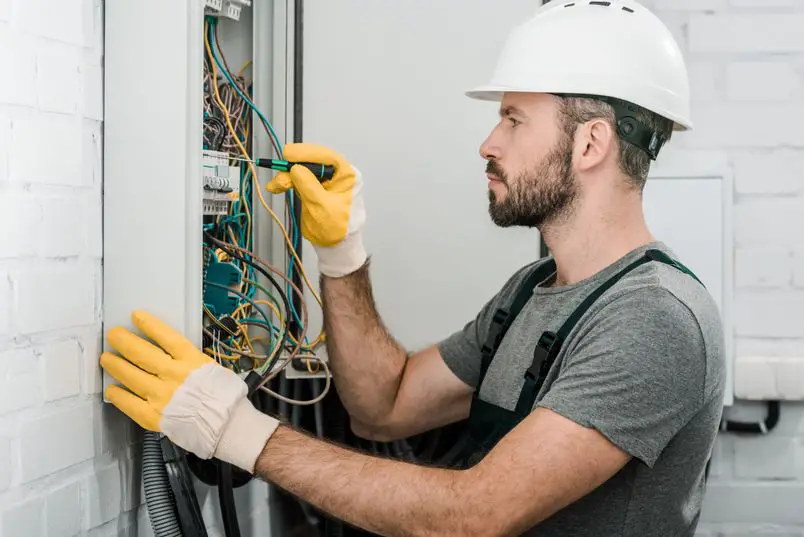
These tests include:
- Continuity testing: This test verifies that the electrical continuity is maintained throughout the installation, ensuring that there are no breaks or faults in the wiring.
- Insulation resistance testing: This test determines the effectiveness of the electrical insulation in preventing short circuits or current leaks. A low insulation resistance can lead to dangerous situations, such as fires or shocks.
- Earth fault loop impedance testing: This test measures the resistance of the earth fault loop, which is a critical factor in determining the effectiveness of the electrical system’s protection devices. A low loop impedance value ensures that protective measures, such as circuit breakers, work within the required time in case of a fault.
- RCD testing: This test checks the functioning of residual current devices (RCDs), which are designed to protect against electric shocks caused by contact with live conductors or earth faults.
Upon completion of the electrical tests, the electrician will document the results in the EICR. This report includes information on whether the electrical installation is safe for continued use, as well as any recommendations for necessary remedial actions.
Understanding EICR Codes
C1 Code
The C1 Code in an Electrical Installation Condition Report (EICR) signifies immediate danger or risk of injury. Remedial action is required immediately to resolve any identified hazards. Examples of scenarios that might warrant a C1 Code include exposed live wires or damaged equipment posing a significant risk of electrical shock or fire.
C2 Code
A C2 Code indicates a potentially dangerous situation that calls for urgent remedial action. Although the risk of injury or damage may not be imminent, such hazards could escalate quickly if left unaddressed. Examples of situations that may result in a C2 Code include insufficient earthing or bonding, overloaded circuits, or improper installation of electrical fixtures.
C3 Code
When a C3 Code is assigned during an EICR assessment, it suggests that improvements are recommended for the electrical installation. While not deemed an immediate danger, these issues can still pose potential risks or affect the overall efficiency and safety of the system. A C3 Code might arise from outdated or worn fixtures and fittings, or deviations from the current standards and regulations.
FI Code
An FI Code calls for further investigation of specific areas within the electrical installation. This may be due to a lack of accessible information, the presence of an unusual or unexpected condition, or concerns that could not be fully assessed during the initial inspection. Further investigation is necessary to determine the exact nature and potential hazards associated with these issues.
EICR Frequency
Property Types
EICR, or Electrical Installation Condition Report, is a crucial process that involves inspecting and testing electrical installations to ensure their safety. The frequency of EICR inspections depends on the type of property:
- Domestic properties: Typically, an EICR should be carried out every 10 years for owner-occupied homes, while rental homes are recommended to undergo an EICR every 5 years.
- Commercial properties: These installations generally require an EICR every 5 years. However, businesses with a higher risk (e.g., catering establishments) may need more frequent inspections.
- Industrial properties: EICR inspections should be carried out every 3 years for industrial installations.
Tenancy Changes
In addition to regular inspections based on property types, there are circumstances that can prompt an EICR:
- Change of Tenancy: Landlords are advised to conduct an EICR inspection before letting a property to a new tenant. This ensures the electrical installation is safe and complies with legal requirements.
- Alterations to the Installation: Significant changes, additions, or extensions to electrical installations may necessitate an EICR to ensure the system remains safe and complies with the relevant regulations.
- After an Electrical Incident: An EICR should be conducted if there has been an electrical incident, such as a fire or a significant power surge, to assess any potential damage and determine if repairs or upgrades are necessary.
By adhering to these guidelines, property owners can help ensure the ongoing safety of their electrical installations, reducing the risk of accidents and complying with legal requirements.
Hiring a Qualified Electrician
When looking to obtain an EICR (Electrical Installation Condition Report), it is essential to hire a qualified electrician. This is because an EICR is a document that assesses the safety of an electrical installation, and only a competent professional should carry out the inspection.
Firstly, ensure that the electrician has the necessary certifications and accreditations. These may include:
- Level 3 NVQ Diploma in Electrotechnical Services (Electrical Maintenance)
- Level 3 NVQ Diploma in Installing Electrotechnical Systems and Equipment (Buildings, Structures and the Environment)
- City & Guilds 2391 Inspection and Testing qualification
- Membership with a professional body, such as the National Inspection Council for Electrical Installation Contracting (NICEIC)
It’s always a good idea to ask for references or look for reviews from previous clients of the electrician. This will give you an insight into their level of professionalism, skill, and customer service.
Consider the electrician’s availability and how quickly they can conduct the EICR. Some properties may require an urgent assessment, and it’s crucial to know if the electrician can accommodate your timetable. Moreover, obtain a quote for the service and make sure it is comprehensive, including any potential additional charges, such as travel costs or extra hours needed for larger installations.
In summary, to ensure a proper and thorough EICR, it is crucial to hire a qualified electrician. Check their credentials, ask for references, and assess their availability and cost to make an informed decision.
Common Issues Found in EICRs
During an Electrical Installation Condition Report (EICR), several issues may be discovered by the electrician. These issues are often the result of outdated systems, maintenance neglect, or incorrect installations. Here, we discuss some common problems that may be identified in EICRs.
C1: Danger present This is the most severe issue that can be identified in an EICR. It indicates an immediate risk of shock or fire to people, property, or livestock. In these cases, the issue must be resolved immediately.
C2: Potentially dangerous Although not as severe as C1, Category C2 findings also require urgent remedial action. These issues may not pose an imminent threat but can become hazardous if left unresolved.
FI: Further investigation required This code indicates that a potential issue has been identified but needs further investigation to determine the severity and the appropriate corrective action.
C3: Improvement recommended C3 issues are not considered dangerous, but addressing them can enhance the overall safety and performance of the electrical system.
In addition to these codes, some specific problems commonly found in EICRs include:
- Overloaded circuits: This occurs when too many electrical devices are connected to one circuit, leading to excess current and potential overheating.
- Outdated wiring: Older wiring can become degraded, brittle, and may not be suitable for modern electrical demands. This can lead to a higher risk of electrical fires or faults.
- Inadequate earthing: Proper earthing is crucial for the safe functioning of electrical systems. Insufficient earthing can result in an increased risk of electric shock.
- Damaged or worn-out switchgear: Over time, switches and other electrical components can deteriorate, which may pose potential hazards.
To maintain electrical safety, it is crucial to address the issues identified in an EICR promptly. Regular EICR assessments can help to prevent and detect problems before they become severe and pose risks to people or property.
After the EICR: Remedial Work and Retesting
Following the completion of an Electrical Installation Condition Report (EICR), the electrician may identify hazards that require urgent attention. These are typically coded as C1 or C2 in the EICR, indicating the severity of the issues found during the inspection.
Upon receiving an EICR, property owners must address these concerns by carrying out the necessary remedial work. Depending on the issues, this may involve:
- Repairing or replacing damaged wiring
- Ensuring circuits are correctly earthed and bonded
- Installing or updating a consumer unit with current safety standards
- Rectifying incorrect connections or installations
Once the remedial work has been completed, it is essential to have the electrical system retested to ensure that the issues have been resolved and the property complies with the required safety standards. This retesting process may be carried out by the same electrician who conducted the initial EICR or by a different qualified electrician. In either case, the electrician should issue a Minor Work Certificate (MWC) or an Electrical Installation Certificate (EIC) that covers the remedial work carried out.
It is crucial to keep a record of the EICR, EIC, and MWCs, as they serve as proof that the necessary electrical maintenance and safety measures have been implemented in accordance with the Electricity at Work Regulations 1989. These documents can be invaluable in the event of an electrical accident or during relevant safety audits.
In summary, the process of addressing issues identified in an EICR includes carrying out remedial work and retesting to ensure compliance with safety regulations. Property owners are responsible for scheduling and completing these tasks promptly to maintain a safe electrical system in their properties.
